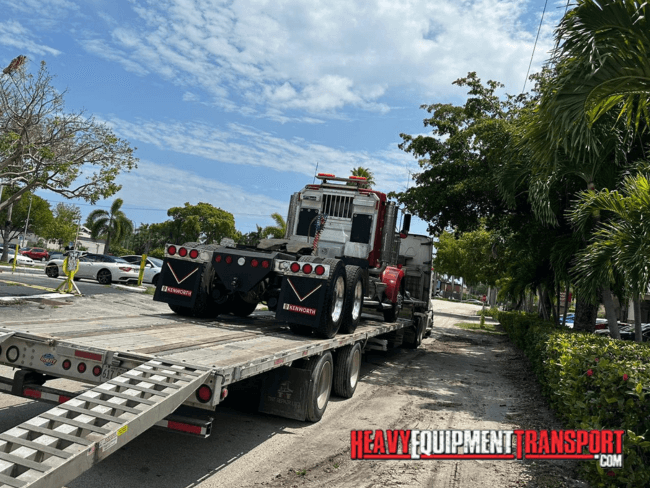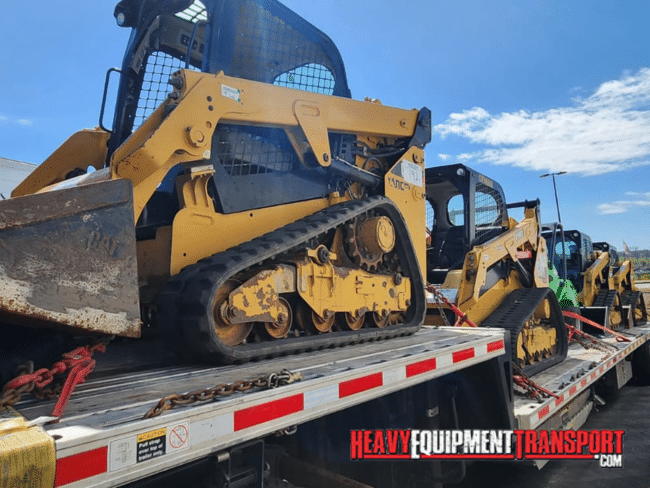What is a Partial Load?

Francisca Olive / July 2023
How much money you spend, how long it takes to ship, and how well it is handled all hinge on the method you choose for transporting your freight. With all its benefits, partial truckload shipping might be the best option for your next shipment. But what is a partial load? This article will delve into partial load definition and the benefits of partial truckload shipping.
Partial Load Definition
A bigger shipment that does not necessarily need the utilization of a full truckload trailer can sometimes be transported using a freight mode known as a partial load. Partial loads lie between full truck loads and less-than-truckload (LTL) shipments.
This category includes shipments that weigh more than 5,000 pounds or contain six or more pallets. You don’t need to select a freight class to lock in a rate when transporting less than a full truckload.
What Makes a Load Partial?
Partial truckload shipments are distinct from LTL shipments in that freight class is not required. This way, supplementary costs like re-classification and minimum density assessments are avoided entirely. You should expect less handling of your shipment (and hence fewer potential claims) from a partial truckload carrier because they tend not to stop at distribution terminals en route.

Transport Your Partial Load Today
Heavy Equipment Transport is always available for a quote. Fill out the form or give us a call now! (888) 730-2951
Benefits of a Partial Load
➤ Only One Truck is Required
You don’t need to coordinate multiple vehicles to carry a partial consignment because most truckloads move point-to-point. PTL freight may be included in existing shipping lines without the need to coordinate distribution hub changes.
The number of miles your trucks spend on the road doing nothing is reduced when you take advantage of partial freight loads, which is especially helpful if you run a small fleet or are a sole owner-operator. You can pick up a partial load and increase your earnings on the way back.
➤ Less Handling
Partial loads are rarely transferred; therefore, there is far less opportunity for cargo damage during loading and unloading.
➤ Fewer Stops
Because there are fewer transfers, you will have to wait at loading and unloading ports for a shorter amount of time and will have more time to spend on the road. Regarding delivery times, some shippers are more accommodating than others.
➤ No Freight Class Required
Paperwork and potential red tape are reduced or eliminated when freight classes are not required. Transportation is as easy as picking up an item, transporting it to its destination, and setting it down.
➤ More Customers
In many instances, combining the partial freight loads of many clients into a single trailer load is possible. Yet, if you’re working for different shipping companies, you may make more than a full truckload driving the same route. For this to work well, a well-organized shipping route is essential.
To a large extent, transporting partial loads is like having the best of both worlds. Offering shipping rates less expensive than those for full truckloads can make you more competitive. Also, loading up your trailer with several goods will increase your earnings per mile driven.

When Should You Choose Partial Load Shipping?
There are many factors to consider before choosing PTL shipping.
➤ Size
Shippers opt for partial loads when a shipment requires a lot of room but less than a full trailer. On the other hand, if the cargo is somewhat bigger than most LTL loads, partial truckloads may be more cost-effective than LTL loads.
➤ Density
Freight classes are required for LTL transport. Shipment costs are stratified into “freight classes” tiers according to a diminishing density scale. This means that shipping costs will increase proportionally with the load’s lack of density. Consider the case of six totes of apples, which only occupy a relatively tiny area but contribute significantly to the total weight of the shipment. Contrast that with 20 sheets of stainless steel guttering, which take up considerably more room but are much lighter. If so, sending the guttering as a partial load will save you money.
Good candidates for partial truckload shipping include:
● Goods between 100 and 3,000 pounds
● Cargo under 38,000 pounds
● Materials, components, and machines that are large but relatively lightweight
● A partial load that constitutes over six but less than twenty skids or pallets
● Cargo that is too small for FTL shipping but too large for LTL
● Goods susceptible to damage from unloading and loading
● Loads that require express or point-to-point delivery
Key Takeaway
Now that you know the partial load definition and what makes a load partial, you can capitalize on that information. A partial load benefits drivers and businesses that want to reduce shipping costs.

William Thomas
Heavy Transport Specialist
Being able to lead a team of such talented logistics agents has been a wonderful experience over the past ten years. If you would like to know anything more about the heavy equipment transport services we offer, don't hesitate to give us a call!